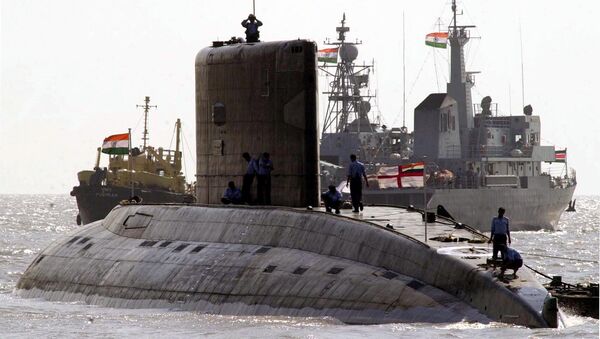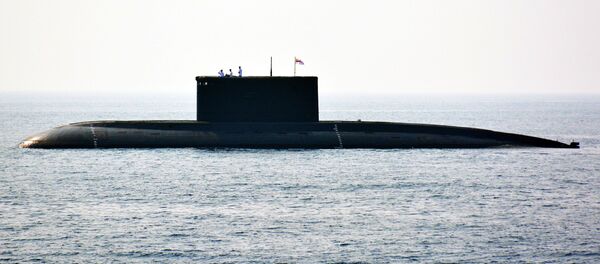New Delhi (Sputnik): The Indian Navy claimed on Wednesday that it had successfully conducted a "live mating" exercise with its submarine rescue vessel at Visakhapatnam, the Navy's submarine base on the eastern seaboard. The development was termed "a historic achievement" by the Navy.
The Indian Navy claimed that its Deep Submergence Rescue Vehicle (DSRV) — built with the help of the UK's James Fisher & Sons — undertook a drill, including personnel transfer from the bottomed submarine Sindhudhvaj, which was simulating a submarine in distress, to surface using the DSRV.
"The newly acquired skill by Indian Navy and live mating exercise is a historic achievement towards DSRV integration into the Indian Navy and would pave way for Indian Navy to emerge as a Submarine Rescue Provider in the Indian Ocean Region", the Indian Navy said in an official statement.
#IndianNavy Deep Submergence Rescue Vehicle (DSRV) based at Visakhapatnam undertook live mating exercise 02Jun19 incl personnel transfer from bottomed s/m #INSSindhudhvaj, simulating as a Distress Submarine to surface using the DSRV. pic.twitter.com/XQF7ZHIuHr
— SpokespersonNavy (@indiannavy) June 5, 2019
READ MORE: India to Build Advanced Repair Facility for Scorpene-Class Submarines — Source
Currently, most submarines operated by the Indian Navy are two decades old. Prior to the induction of deep submerged rescue vessels, the Navy had been grappling with rudimentary submarine rescue capabilities comprising rescue "bells", which are containers that can be lowered to the submarine in distress up to a maximum of 150 metres.
Prior to the induction of the DSRV, the Indian Navy lost two Kilo-class submarines — INS Sindhurakshak and INS Sindhuratna — with a large number of sailors on board in 2013 and 2014. It is considered that the Navy lost many of its sailors in the accidents mainly due to the absence of modern rescue vessels that support deep sea diving for a prolonged period.
READ MORE: Indian Navy Inducts Its First Submarine Rescue Vessel
With the availability of the DSRV, the Indian Navy can now quickly deploy its submarine rescue systems on board ships or fly them out on the Indian Air Force's own C-17 heavy transport jets.
At a later stage, the DSRV will receive support from 118-metre-long diving support vessels with a roughly 7,650-tonne displacement capacity being built at the state-owned Hindustan Shipyard Limited.



